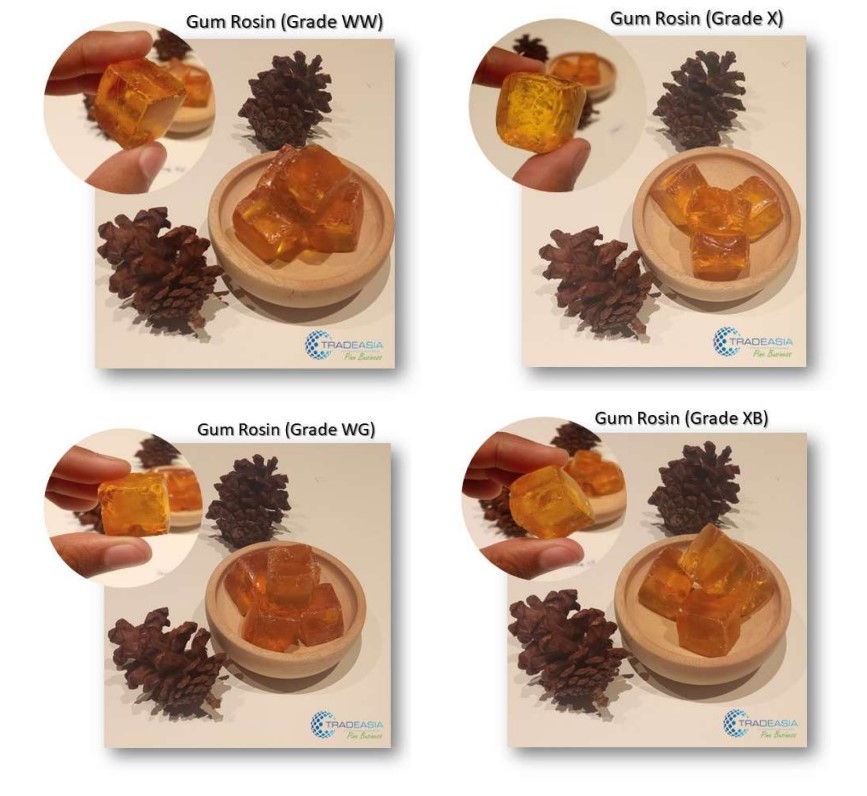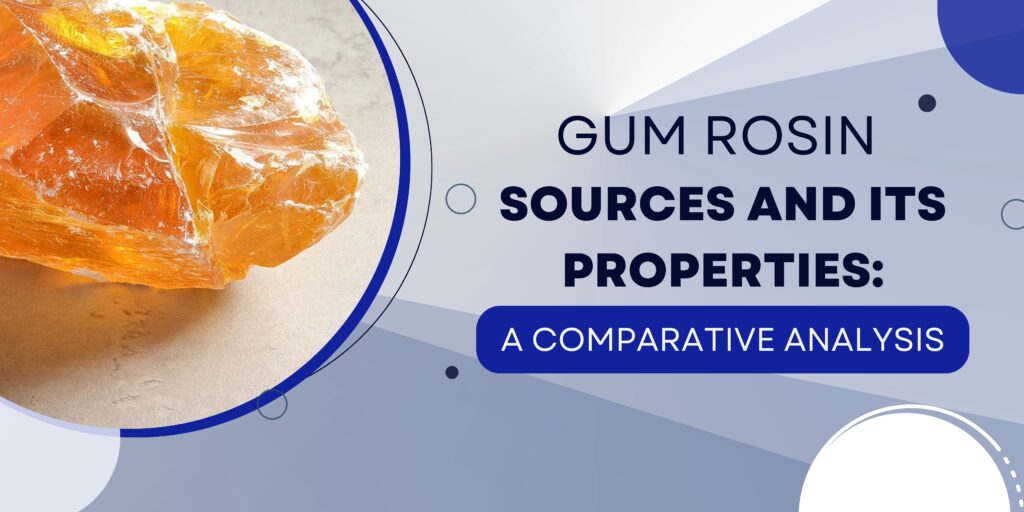Table of Contents:
6. Paper Sizing

Gum rosin, also known as colophony, is a naturally occurring resin harvested from pine trees, primarily the genus Pinus. The resin is extracted through a process called tapping, where cuts are made in the tree’s bark, allowing the sap to flow out. Once collected, the sap undergoes a series of processes, including distillation and refining, to produce the final product – gum rosin.
Properties of Gum Rosin
Gum rosin exhibits several distinctive properties that make it highly valuable in various applications:
Solubility: Gum rosin is soluble in a wide range of organic solvents, making it an ideal choice for formulating adhesives, varnishes, and paints.
Thermoplasticity: It is thermoplastic, meaning it softens when heated and hardens when cooled. This property is essential in applications like soldering and hot melt adhesives.
Sticky and Tacky: Gum rosin’s stickiness and tackiness make it an excellent choice for adhesive formulations, helping materials bond effectively.
Dielectric Properties: It possesses good dielectric properties, making it valuable in electronics, especially in the manufacture of solder flux and encapsulating compounds.
Biodegradability: Gum rosin is a renewable and biodegradable resource, making it an environmentally friendly choice in many applications.
Applications of Gum Rosin
Adhesives and Sealants
Gum rosin is perhaps most commonly associated with adhesives and sealants. Its tacky nature and excellent bonding properties make it a key component in various adhesive formulations, such as hot melt adhesives, pressure-sensitive adhesives, and rubber adhesives. The adhesives industry relies heavily on gum rosin for its adhesive strength and versatility.
Paints and Coatings
In the paint and coatings industry, gum rosin is used as a resin binder. When mixed with other ingredients, it enhances the film-forming properties and improves the adhesion of the coating to various surfaces. Rosin-based varnishes are also used to protect wood and other substrates.
Soldering Flux
Soldering is a critical process in electronics manufacturing. Gum rosin is a key component of soldering flux, a substance used to clean metal surfaces and promote solder flow. It aids in ensuring strong and reliable solder connections in electronic circuits.
Ink and Printing
In the printing industry, gum rosin finds application in ink formulations. It helps in improving the ink’s adhesion to paper and other surfaces, enhancing print quality. It is also used as a binder in the production of lithographic and letterpress inks.
Rubber Compounding
In rubber compounding, gum rosin is added to rubber formulations to improve tackiness, adhesion, and processability. It is especially useful in the production of tires, belts, and various rubber goods.
Paper Sizing
In the paper industry, gum rosin is employed in paper sizing, a process that adds a protective layer to paper to control its ink-absorbing properties. This ensures that ink remains on the surface, leading to sharper and more vibrant printing.
Pharmaceuticals
Gum rosin is used in pharmaceutical preparations as a tablet coating and as a component in ointments and creams. Its biocompatibility and adhesive properties make it an essential ingredient in certain drug delivery systems.
Food and Beverage Industry
In the food and beverage industry, gum rosin is used as a food-grade coating on certain candies and chewing gum. It acts as a glazing agent, providing a shiny finish and enhancing product appearance.
Soap Manufacturing
Gum rosin is employed in soap manufacturing as a softening agent. It helps create soap bars that are both mild and easy to lather.
Plastics and Resins
In the plastics and resins industry, rosin is utilized as a tackifier in the production of various plastic materials. It improves the cohesion of polymers and contributes to their adhesive properties.
Musical Instruments
Musicians often use rosin to enhance the friction between their bows and the strings of stringed instruments like violins and cellos. This helps produce clear and resonant sounds.




